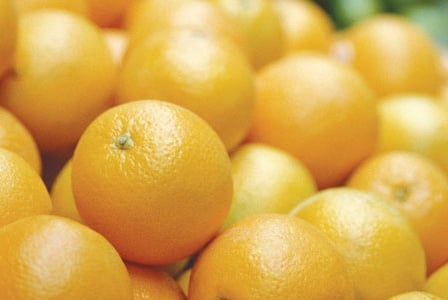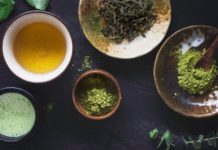
It\’s impossible to turn around these days without someone urging us to reduce chemical use and exposure in the home. So where can we start? Ah, in the kitchen.
It’s impossible to turn around these days without someone urging us to reduce chemical use and exposure in the home. So where can we start? Ah, in the kitchen.
Food can contain harmful chemicals from pesticide sprays and/or from growing in a contaminated environment, says Environmental Defence (environmentaldefence.ca). Besides pollutants on fresh produce, the national environmental group notes that 94 to 99 percent of our exposure to cancer-causing and hormone-disrupting, persistent organic pollutants, such as PCBs and pesticides, come from diet.
Now that’s tough to swallow! Fortunately, one phone call proves how easy a healthier choice–an organic choice–can be.
Why organic?
“There are many benefits to eating organically,” says Dan Henry, founder of Green Earth Organics in Vancouver, an organic home delivery service. “Organic farming prevents soil erosion and protects water quality. It saves energy and keeps untested chemicals and genetically modified organisms off our plates. It also protects farm workers and helps small local farms and economies.”
A growing body of science also suggests organic food may be nutritionally superior. For example, Organic Center’s chief scientist Charles Benbook’s 2005 review of research on health-promoting and disease-fighting antioxidant levels found that, on average, antioxidant levels in organic produce were 30 percent higher than conventionally grown food.
Organics Go Mainstream
“It’s exciting how fast the industry is growing and how mainstream organics have become,” says Henry. “When you see the big guys getting into organics, you know organics are here to stay.”
Those large companies include Wal-Mart, Coca-Cola (organic Odwalla fruit juices), Kraft Foods (organic Boca meatless products), and General Mills (organic flours and cereals). Mainstream is the perfect word for a former fringe market that’s now worth upwards of an estimated $1 billion annually in Canada.
Until now, the integrity of Canadian organics has been maintained by national standards and numerous independent certifying agencies. Finally, we have new federal regulations.
Shopping Guide
“People are becoming more aware and concerned about the food they eat,” says Henry. But if the prospect of restocking a larder seems overwhelming, the Environmental Working Group’s Shopping Guide to Pesticides in Products is a good beginner’s helper.
Download your free EWG Shopping Guide at foodnews.org and head to your local whole foods market. Or if you’re time-strapped, home delivery might be the ticket. Most companies offer the option of customizing your delivery.
Whether you grab your car keys, pick up your phone, or suss out your local organic scene, now’s the perfect time to make a change towards a chemically reduced kitchen.
Stay Safer–Organically
After analyzing almost 43,000 tests by the US Department of Agriculture and the US Food and Drug Administration between 2000 and 2004, the Environmental Working Group (EWG) came up with 12 “Consistently Clean” fruits and veggies that are least likely to contain pesticide residues; and a “Dirty Dozen\” produce items most likely to contain pesticides.
Consistently Clean
- onions
- avocados
- sweet corn
- pineapple
- mango
- asparagus
- sweet peas
- kiwi
- bananas
- cabbage
- broccoli
- papaya
Dirty Dozen
- peaches
- apples
- sweet bell peppers
- celery
- nectarines
- strawberries
- cherries
- pears
- imported grapes
- spinach
- lettuce
- potatoes
By sticking to the Consistently Clean list and by choosing only organic for those fruits and vegetables on the Dirty Dozen list, the EWG says we can cut 90 percent of pesticides from our diet.
Check Out That Label
Ever been confused by organic logos? Ever picked up an imported product and wondered at the unfamiliar label? Say goodbye to those days as Canada’s new national organic regulations are phased in over the next couple of years.
Following an announcement last December, all products sold as organic will soon have to be registered with a nationally recognized, independent certifier.
A national “Canadian Organic” logo will appear on all certified organic products as well as on processed items that contain at least 95 percent organic ingredients. If a product has 70 to 95 percent organic ingredients, the specific percentage must be displayed.
Imported products that bear the “Canadian Organic” label must also reveal the country of origin.















